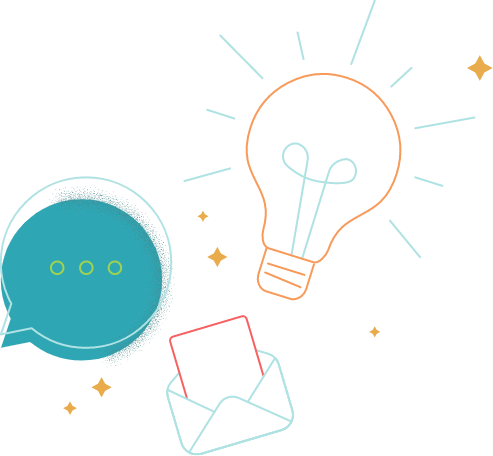Ever looked at a paperback dictionary and felt old? Nowadays, Grammarly’s little green circle has become ubiquitous in our digital lives. It quietly sits in the corner of our text fields, ready to swoop in and save us from embarrassing typos and grammar mistakes.
But Grammarly has long gone past the status of a simple spell checker. It’s analyzing your tone, restructuring your sentences and even generating AI content. How did we get here? Let’s peel back the curtain on how the years have transformed the successor of Microsoft’s Clippy into a sophisticated digital writing partner.
The Writing Tool That Revolutionized Editing
Before we all even worried about something like an AI detection tool, Grammarly began as a straightforward spell-checking tool. Launched in 2009, the platform aimed to help users catch that pesky grammatical error that traditional spell checkers usually miss.
What started as a subscription-based grammar checker has exploded into one of the most widely used AI writer tools in the Anglophone world. Today, Grammarly boasts over 40 million daily active users and is valued at over $13 billion. Writers, marketers, students and professionals across industries have integrated Grammarly’s suggestions into their workflows, making it as essential as word processors themselves.
The platform’s success stems from its tiered approach to serving users. The free version offers basic spelling, grammar and punctuation checks. It even gives you some options to learn about your tone and some AI capabilities — enough value to hook casual users. Pro subscribers tap into advanced features like clarity suggestions, one-click sentence rewrites and plagiarism detection. Enterprise tiers add team-specific permissions, dedicated support and cost center visibility.
Grammarly’s cross-platform functionality is perhaps its most compelling feature. It works everywhere you write (maybe with the exception of ChatGPT’s entry window) — from Gmail to Google Docs, social media platforms to content management systems. This omnipresence creates a seamless experience that users quickly become dependent on. It’s like having an editor perched on your shoulder, ready to provide feedback whenever you type a word.
How Did an Editor Checking Your Spelling Evolve to Grammarly AI?
Grammarly’s evolution mirrors the rapid advancement of AI technology itself. Let’s trace this fascinating trajectory:
2009: Grammarly launches as a subscription-based grammar checker using rule-based algorithms.
2015: Grammarly introduces browser extensions, expanding its reach beyond dedicated platforms.
2018: The company begins incorporating machine learning techniques to improve formality suggestions. They also created their own corpus based on Yelp reviews and Yahoo Answers to train the model on coherence.
2019: Dipping its toes in written discourses rather than static documents, Grammarly published its first insights on workplace emails, which would later turn into dedicated toggles for text types.
2021: The company announces its text editor SDK, which opens up the platform to editors looking for communication support within their own tools.
2023: GrammarlyGO enters the scene — the platform’s first true generative AI feature, capable of composing, ideating and rewriting text.
2024: Grammarly provides its own tool to help users detect AI-generated content.
2025: Authorship, on which we’ve run our own tests, now aims to give users more insights into which parts of their text is AI-generated content vs. human-written.
This remarkable progression demonstrates how Grammarly transitioned from simple corrections to sophisticated writing assistance. What began as rule-based pattern matching evolved into complex neural networks capable of understanding context, intent and style.
Generative AI Tools Under the Hood
So, what’s actually happening when that green circle analyzes your text? Let’s break down the AI technologies powering Grammarly’s most impressive features:
Natural Language Processing (NLP) Foundation
At its core, Grammarly leverages sophisticated NLP models to understand text the way humans do. These models parse sentences, identify parts of speech, recognize entities and analyze relationships between words. Unlike early spell checkers that simply matched words against dictionaries, Grammarly’s NLP systems analyze the linguistic structure of entire sentences.
Contextual Understanding
Perhaps the most impressive aspect of Grammarly’s AI is its contextual awareness. Yes, for us mortals, these are all pretty normal tasks, but think of all the tasks that happen in harmony. First, the system checks individual words. Then, it also has to do that in sentence fragments. And finally, it needs to evaluate how they function within sentences and paragraphs. This enables the detection of subtle errors like:
- Using “affect” when you meant “effect”.
- Inconsistent tense usage across paragraphs.
- Subject-verb agreement errors in complex sentences.
- Correctly identifying homophones based on context.
Tone Detection and Analysis
Grammarly’s tone detector examines multiple linguistic dimensions to identify emotional undertones in your writing. The system can detect dozens of tones, from “worried” and “encouraging” to “formal” and “egocentric.” This feature relies on sentiment analysis algorithms trained on vast datasets of text with known emotional qualities.
Behind the scenes, the tone detector likely uses a combination of:
- Word choice analysis (identifying emotion-laden terms).
- Sentence structure evaluation (longer, more complex sentences often read as more formal).
- Punctuation patterns (frequent exclamation points suggest excitement or urgency).
- Hedging language detection (“perhaps,” “maybe,” “could be” suggest tentativeness).
Clarity and Engagement Scoring
Before you get too excited about the marketer’s favorite buzzword — this is not about boosting your social media profile, although it’s slightly related. Grammarly’s clarity score analyzes readability using metrics like sentence length, complexity and vocabulary diversity. The engagement score evaluates how compelling your writing might be to readers based on word choice, sentence variety and active voice usage.
These scores rely on machine learning models trained on millions of text samples. The system identifies patterns that correlate with higher readability and engagement, then applies these learnings to your writing.
Advanced Rewriting Suggestions
When Grammarly suggests rewrites, it’s using neural machine translation — the same tech that helps tourists say “Where is the bathroom?” in 47 languages, often with mixed results. Think of it as a very polite intern who reads your marketing copy, tilts their head, and says, “Did you mean… this, instead?” It takes your “We leverage synergies to ideate scalable growth solutions” and gently nudges it toward something a human might actually understand — like “We help your business grow.”
GrammarlyGO: The Leap into Generative AI
GrammarlyGO represents Grammarly’s most significant AI advancement yet, but it has caused some confusion in the past. This feature leverages large language models (LLMs) similar to those powering tools like ChatGPT. GrammarlyGO can:
- Generate responses to emails based on the original message.
- Create first drafts from simple prompts.
- Rewrite existing text for different audiences or tones.
- Condense lengthy passages into concise summaries.
- Expand bullet points into fully-formed paragraphs.
However, early adopters noticed the inconsistencies between the rigid rules of the original editor and the open playground of generative AI. Sometimes, generated text would occasionally bypass Grammarly’s own recommendations. Growing insecurities among users, especially in education, probably caused Grammarly to phase out the GrammarlyGO branding and rely more heavily on the term “generative AI assistance.”
The Human Touch Remains
Despite its AI sophistication, Grammarly still maintains human oversight in key areas, even though the results end up informing its product iterations:
- Training data review and bias mitigation.
- Brand guides to ensure your entire team respects editorial guidelines.
- Analytics showing which teams are still struggling with adoption or style implementation.
- Enterprise-level security and privacy, backed by annual certification.
This human-in-the-loop approach helps balance automation with accuracy.
The Future of Responsible AI Writing Assistance: Grammarly’s Impact and Limitations
As impressive as Grammarly’s AI capabilities have become, the system isn’t perfect. Understanding both its strengths and limitations provides a clearer picture of where AI writing assistance stands today and where it’s headed.
While its core grammar and spelling checks achieve remarkable accuracy, style and clarity suggestions can still show more variability. And the newer generative features will probably continue to demonstrate the typical strengths and weaknesses of LLMs as a whole.
Grammarly’s evolution from a basic grammar checker to a sophisticated AI writing assistant illustrates the broader transformation happening across language technologies. By understanding how these tools work, we can leverage their strengths while compensating for their limitations. The future of writing isn’t human versus AI — it’s human and AI collaborating to communicate more effectively than either could alone.
As these tools continue to evolve, maintaining critical awareness of both their capabilities and limitations will be essential. The most successful writers won’t be those who resist AI assistance nor those who rely on it blindly, but those who develop a nuanced understanding of how to partner with these increasingly intelligent systems.






